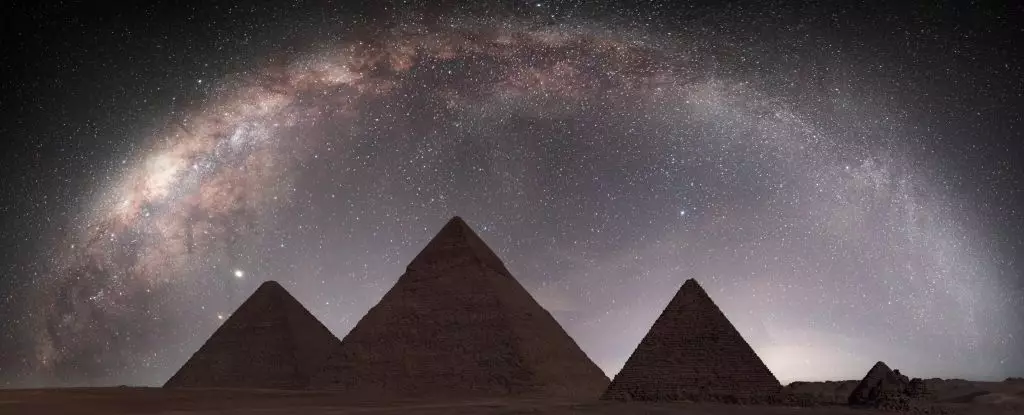The intricate relationship between ancient civilizations and the cosmos has often been a subject of fascination, particularly when considering their spiritual beliefs and scientific understandings. A study led by astrophysicist Or Graur from the University of Portsmouth has illuminated a striking connection between the art of ancient Egypt and the Milky Way. By examining elaborate coffin artworks, Graur posits that the enchanting depictions of Nut, the ancient Egyptian goddess of the sky, subtly echo the celestial wonders visible over the ancient Nile. This revelation is not just enlightening; it invites a reevaluation of how we perceive the ancient world’s understanding of both mythology and the universe.
Nut: The Cosmic Goddess
Nut is often depicted lying gracefully over figures, her nude form adorned with stars and cosmic elements, symbolizing her dominion over the night sky. Current interpretations affirm that these artwork features are richly multi-dimensional, likely offering the ancients a way to communicate deeper truths about existence and afterlife. Graur’s assertion that the stylized depictions of Nut include representations of the Milky Way’s galactic plane challenges the conventional view of these artworks as mere aesthetic embellishments. Instead, they may be interpreted as complex expressions of metaphysical understanding, bridging the gap between spirituality and the celestial.
The goddess’s depiction as a protector who envelops the deceased in her cosmic embrace implies a profound connection between the life beyond and the heavens above. This relationship unveils an astute recognition of the celestial influences in the daily lives of the Egyptians, who revered the cosmos in a way that mirrors modern scientific curiosity.
Evidence in Artistic Expression
Graur’s research, particularly the analysis of Nesitaudjatakhet’s coffin from the 21st Dynasty, brings fresh context to existing knowledge. The undulating line along the goddess’s figure could indeed symbolize the Great Rift—an evident dark band of dust through the Milky Way’s luminous flow. This artistic decision, rare yet potent, demonstrates the Egyptians’ ability to encapsulate cosmic phenomena in their spirituality. While the artwork resembles the Milky Way, it is essential to interpret it in the light of their belief systems, rather than overlaying modern astronomical insights directly onto ancient interpretations.
However, these artistic representations are not ubiquitous. Graur identified only a handful of similar instances, suggesting a nuanced complexity regarding how Nut was associated with celestial phenomena. The distinctiveness of this curve in the art reinforces Graur’s view that while there is a connection between Nut and the Milky Way, they are not interchangeable. This recognition encourages us to appreciate the plurality of interpretations within ancient Egyptian cosmology.
Insights Beyond Art
The study invites broader discussions about interdisciplinary approaches in understanding ancient cultures. Merging the disciplines of art history, archaeology, and astrophysics reveals not only new layers of meaning but also emphasizes the potential for significant insights when diverse fields collaborate. This convergence is indicative of how ancient cultures might have woven their scientific and spiritual interpretations into a singular worldview, remarkably sophisticated for their time.
Moreover, Graur’s initiative highlights the importance of accessible resources in the study of ancient civilizations. The digitization of museum catalogs, which allows open public access, is paramount for fostering greater understanding and appreciation of historical artifacts. Making these texts and illustrations available broadens the reach of knowledge, encouraging both academic and personal exploration into our shared heritage.
Bridging Past and Present
The findings from Graur’s study underline a profound truth: that the ancients possessed a deep-seated awareness of the cosmos, similarly awe-inspiring as our own today. Their interpretations of celestial events and bodies not only served as a spiritual backbone but also established a framework for understanding their existence and place in the universe.
As we uncover the connections between stars and societies, we are reminded of the human inclination to seek understanding beyond our immediate environment. This intersection of art and astronomy from ancient Egypt serves not just as a reflection of a culture long past, but as a mirror to our current quest to comprehend the universe. In that quest, we find the spark of both artistry and inquiry alive in our collective human spirit.

